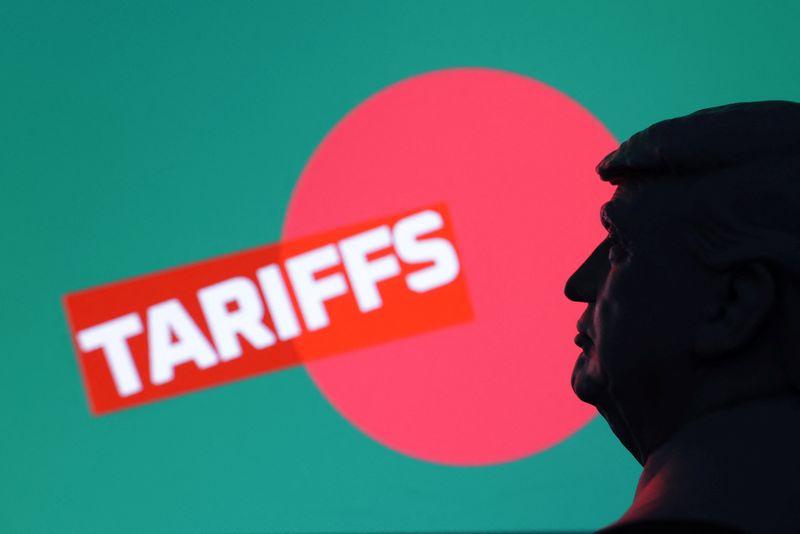German construction sector still in recession, civil engineering only bright spot
Investing.com - Tariffs will likely be the focal point of the release of key inflation data later this week, with the levies anticipated to apply upward pressure to prices in the months ahead, according to analysts at Morgan Stanley (NYSE:MS).
In a note, the bank suggested that inflation is likely to "trend higher," as timing differences between the application of President Donald Trump’s elevated "reciprocal" tariffs and practical realities like shipping dates and trade diversion converge.
"Over time, that wedge narrows, but it helps to explain the lagged effect on inflation data," the analysts led by Seth Carpenter wrote in a note.
Inventory management could also delay the pass-through of tariff costs from businesses to consumers, the Morgan Stanley analysts said. They particularly flagged a move by many carmakers to defer prices until newer, pricier models are launched, arguing that this is "a trend not unique to autos but more acutely felt in inflation metrics because of the importance and volatility of transportation data."
The effective U.S. tariff rate, which calculated from actual levy collections and imports, stood at around 8.7% in May and 8.9% in June, both notably lower than Trump’s announced tariffs -- many of which are set at 15% or higher.
Economists anticipate that Tuesday’s headline reading of U.S. consumer price index, a closely-watched gauge of inflation, will show a marginal acceleration to 2.8% in the twelve months to July. Month-over-month, it is seen slowing slightly to 0.2% from 0.3%.
Stripping out volatile items like food and fuel, the underlying measure is seen speeding up on both a year-over-year and monthly basis.
Much of the attention will likely swirl around the details of the report, particularly after the June figures suggested that, while inflation pressures may be broadly tepid, the prices of some tariff-exposed goods are beginning to edge higher.
The Morgan Stanley analysts said that the June CPI "clearly showed the start of tariff-driven inflation," but flagged recent history -- chiefly, tariffs from Trump’s first term in office -- point to "three to five months as the most likely lag for the full effects of tariff pass-through."
Along with the labor market, inflation is a pillar of the Federal Reserve’s two-pronged policy mandate. Price growth has remained stubbornly elevated above the Fed’s stated 2% target, driving worries that a reduction in borrowing costs could spur inflationary pressures.
But the outlook for interest rates has been complicated by data earlier this month which showed weak job growth in July and a sharp downward revision to the numbers for June and May -- all indications of a cooling labor market which would bolster the case for rate cuts that could fuel investment and spending.
"So, looking ahead to the CPI data, we know tariffs remain the main topic and that inflation is likely to trend higher, but the market and the Fed must assess the risks," the analysts wrote.
"Once we reach September, we will get one more jobs print and another CPI print. Again, tariffs could drive both."
